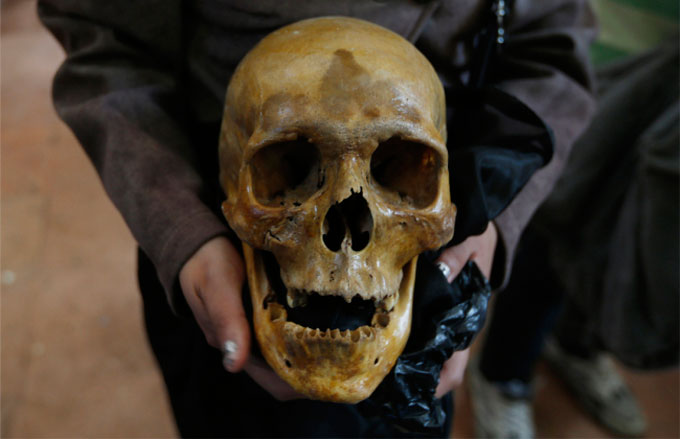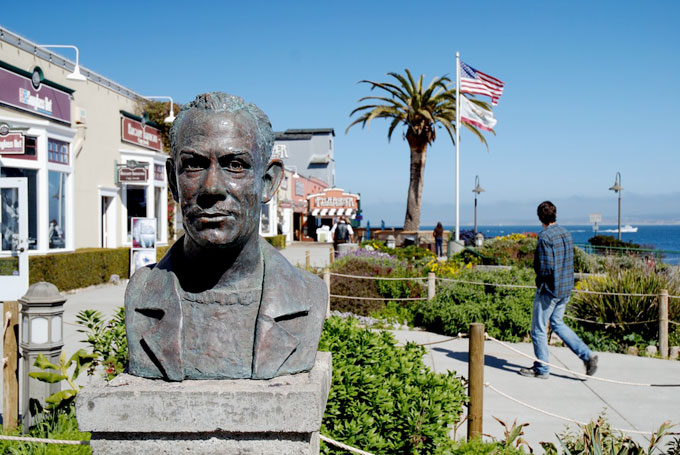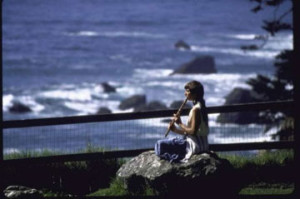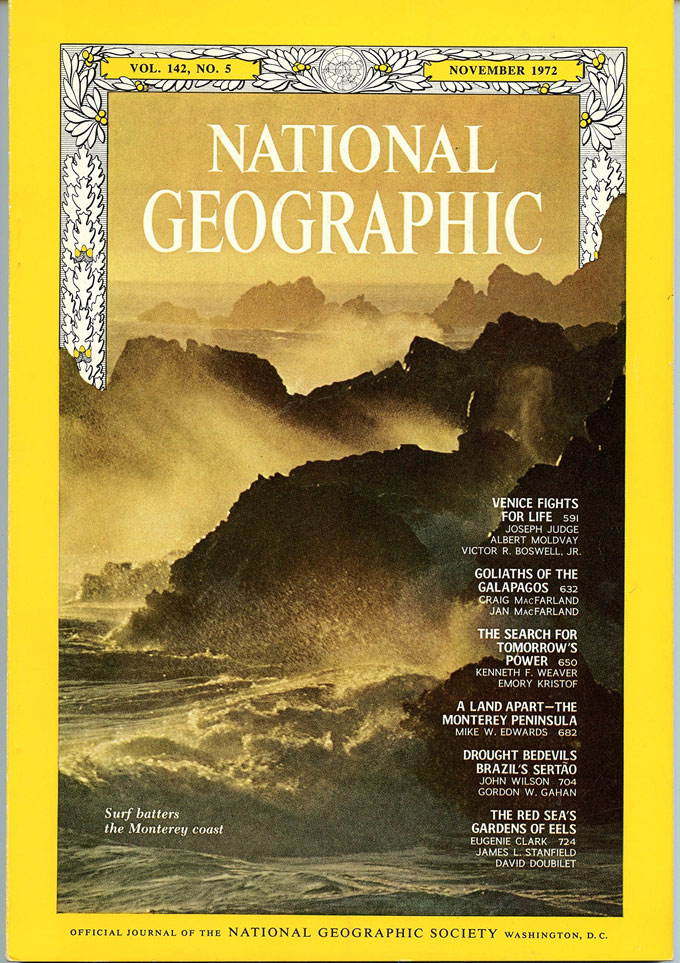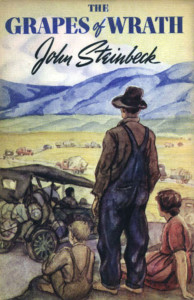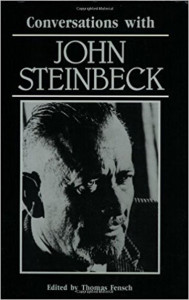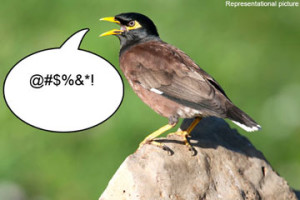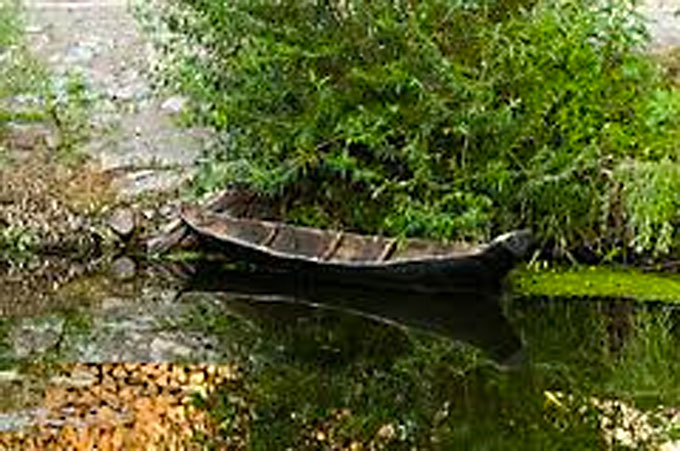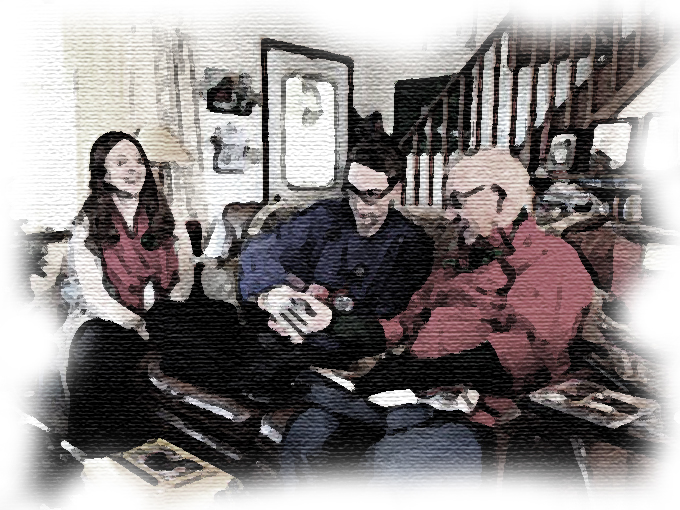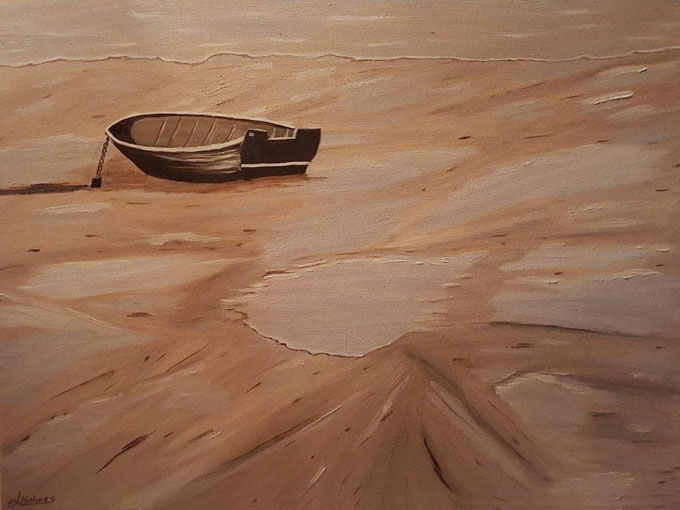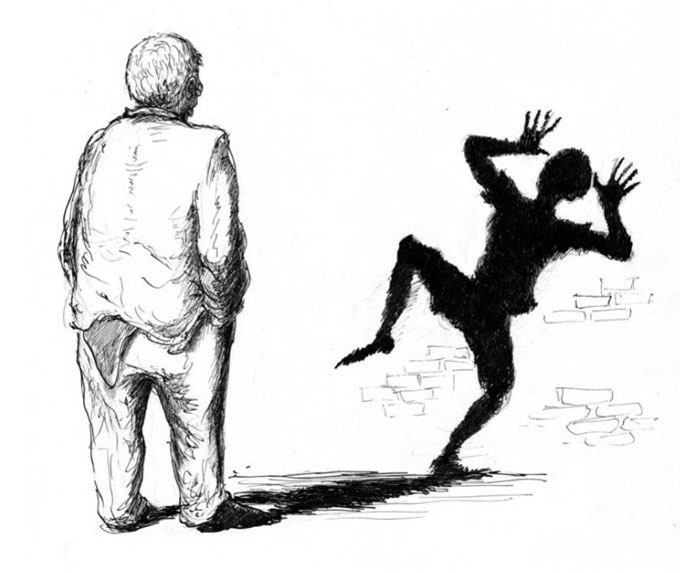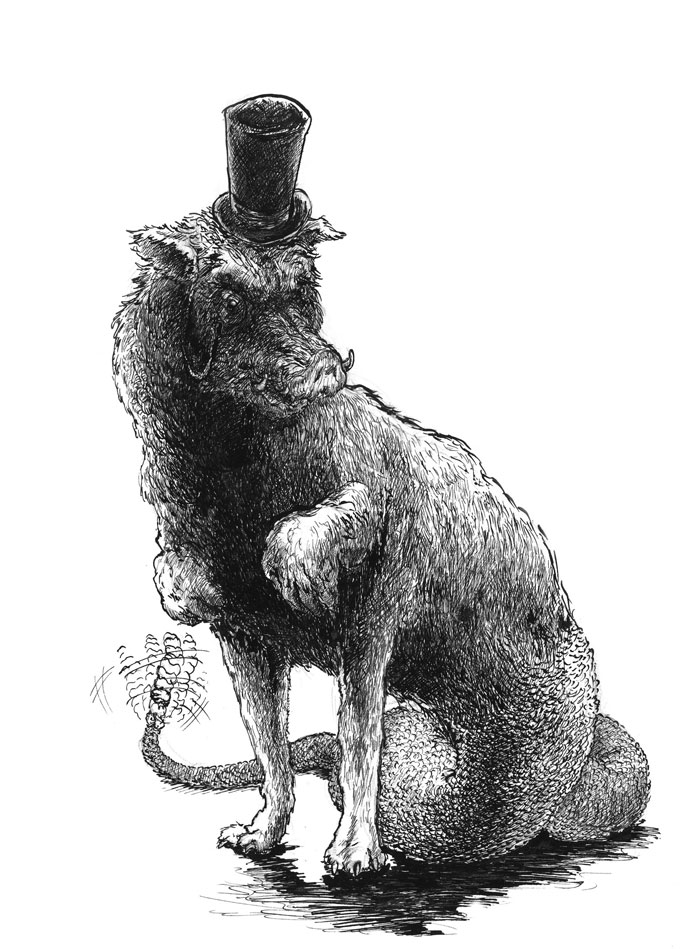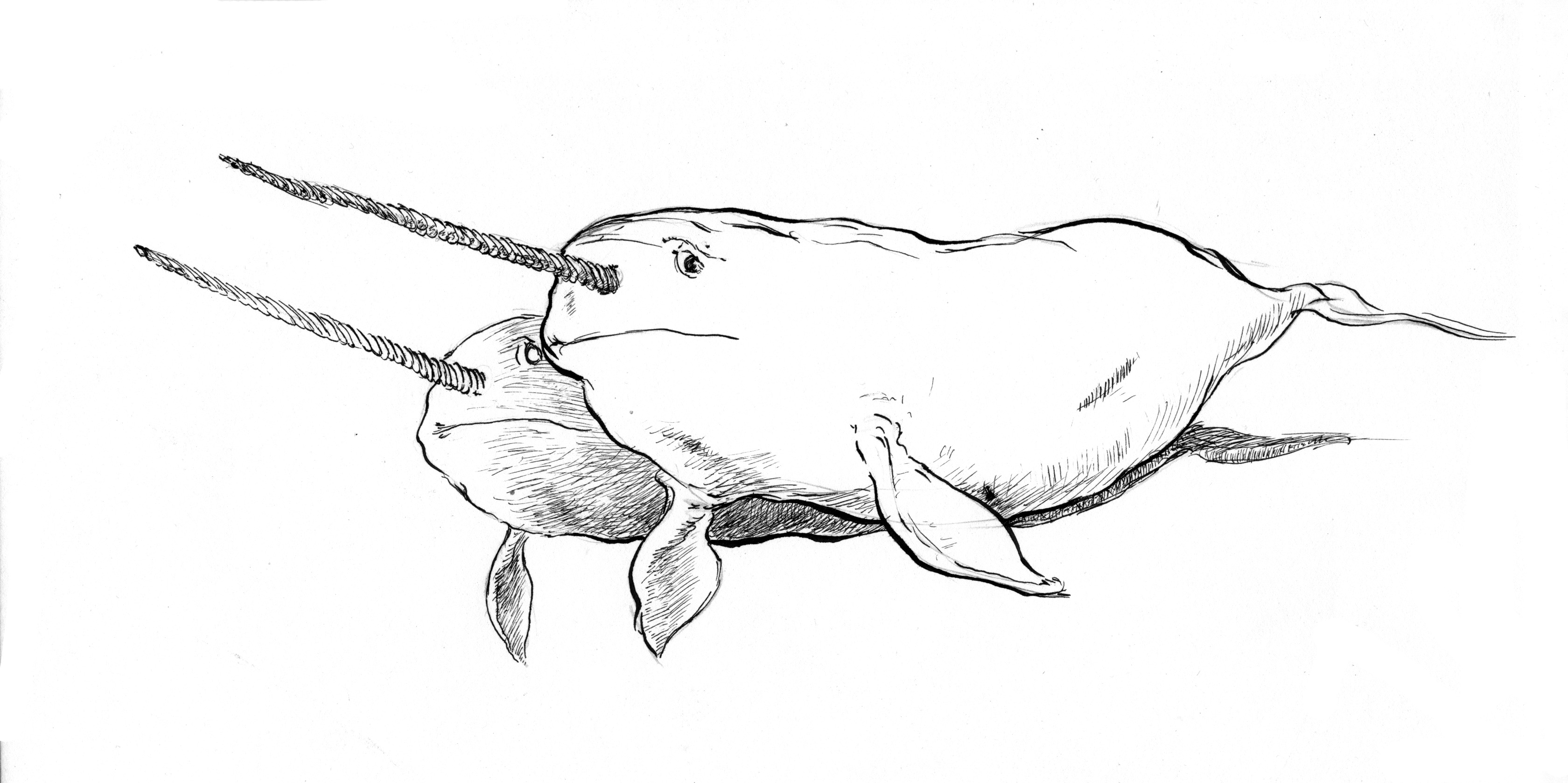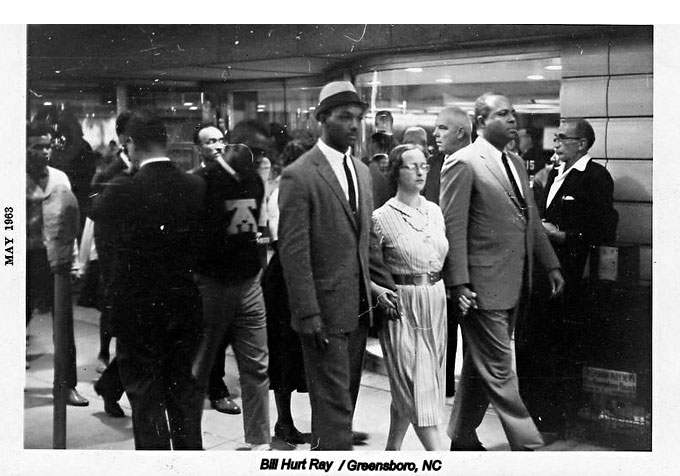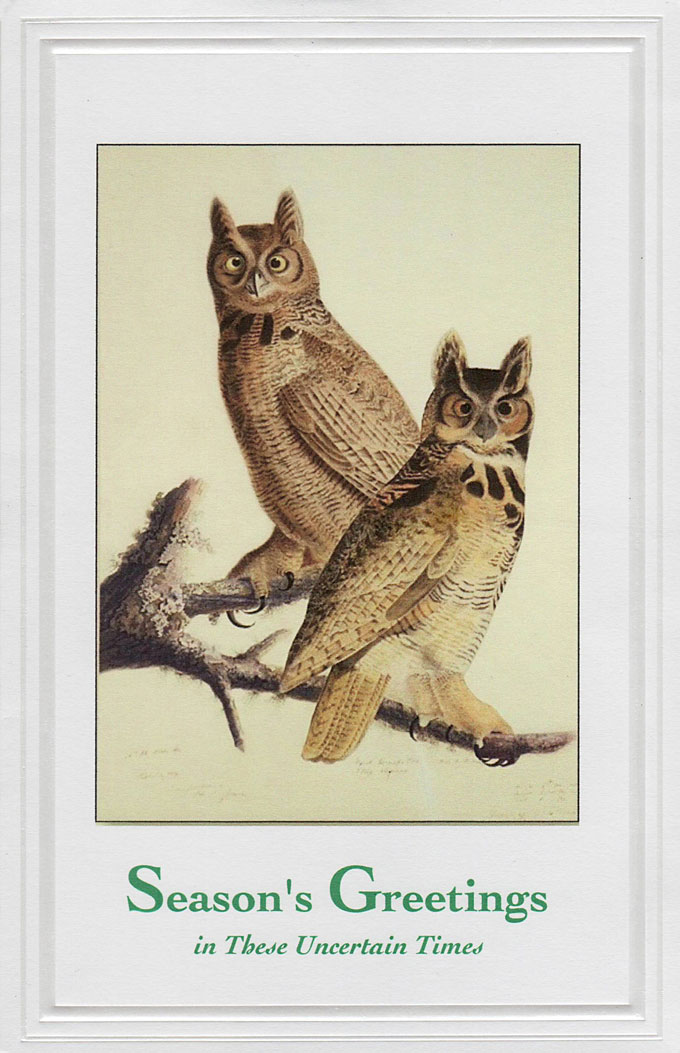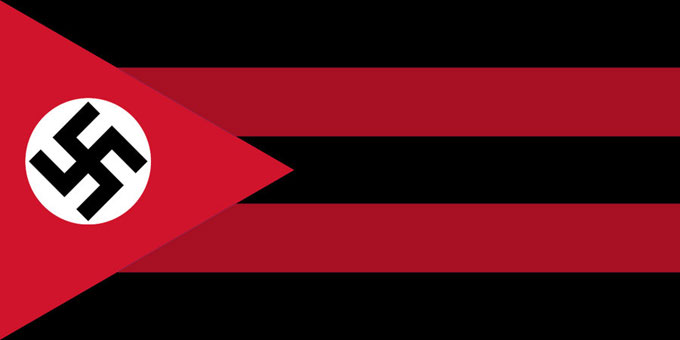Homeless Man Reports a Dead Body
by Carrying a Skull into a Florida Publix
—Colin Wolf, Orlando Weekly
Imagine him in the act of crossing busy US 1,
a silver shopping cart to slow the murmuration.
See the heat shimmers above the road surface.
See a Maserati swerve. Hear a Bentley brake
hard enough to make the muscles of the heart
speed up. In no time, he is parking the object
on a trash can by a double-door to a Publix.
By the pink-flamingo-themed lottery posters.
Why did he take it? Maybe the eyes called up
long rows of tombstones. His own dear dead
or their histories. One witness says he used it,
the skull, like a hand puppet. One said it stank.
Which is why cruisers pull up and spill a cargo
of sheriffs in their Ray Ban Aviator sunglasses.
Later that day, another part of the neighborhood,
a van is parked in drifts and mangroves bordering
a strip club. Under night-marching moon and stars,
the doorjamb of the van hemorrhages arterial-red,
the factory-painted truth that this rough home
is limbed with death in the best of weather.
